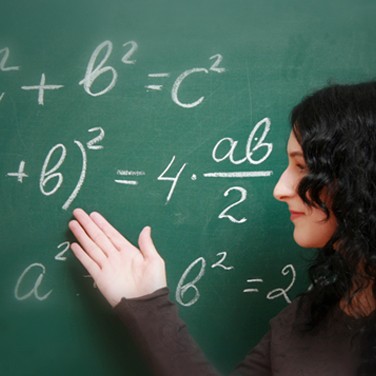Hand Gestures Improve Math Learning

By Samba Lampich
Grasping mathematical concepts isn’t easy for most students, but a new study reveals that by using hand gestures, teachers can boost math learning. The study, published in the journal Child Development, provides some of the strongest evidence yet that gesturing boosts ability to understand, apply and remember math.
The study, conducted by Fenn and Ryan Duffy of Michigan State University and Susan Cook of the University of Iowa, tested 184 second-, third- and fourth-graders on their ability to solve mathematical equivalence (i.e., 4+5+7=_+7), which is crucial in learning algebra.
Half the students were shown videos of instructors waving their hands under each side of the equation to explain that they should be equal and the other half watched speech-only videos of instructors explaining the same concept.
The students were given a test immediately afterward, and those who watched the gesture videos performed better than those who watched the speech-only video. A second test given 24 hours later showed the students who observed the gestures showed improvements and the speech-only group did not.
Making Math Memorable
According to Fenn and Cook, gestures help students understand the fundamental concept of the equation problem, regardless of the numbers. The students are able to solve new problems with new numbers by applying the mathematical concept to the new numbers.
The visual hand gestures often illustrate or reinforce a concept that cannot be easily explained by speech alone; for example, using both hands to demonstrate balance when teaching equations where both sides should be equal.
But it’s not just the teacher’s gestures that seem to boost math learning. A 2007 study by Cook reported that third-graders who were asked to gesture while learning algebra were nearly three times more likely to remember what they had learned than the students who didn’t gesture.
Mastering Math Earlier in the United States
Fenn says that teaching math using gestures would be beneficial to U.S. students who lag behind other Western countries in math. It would help them master equivalence problems in early grades.
“So if we can help them grasp this foundational knowledge earlier, it will help them as they learn algebra and higher levels of mathematics.”
Classroom Discussion
- How can gestures help students learn other subjects like geography, chemistry or grammar?
- What is the purpose of gesturing, other than communication? Consider that blind people and people talking on the phone gesture

